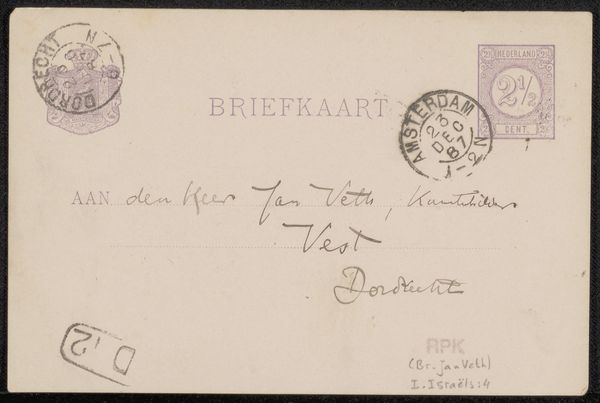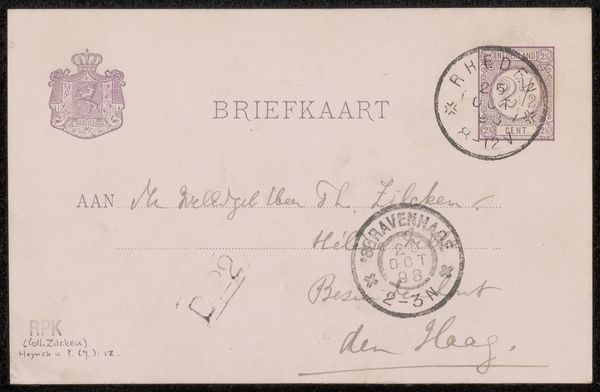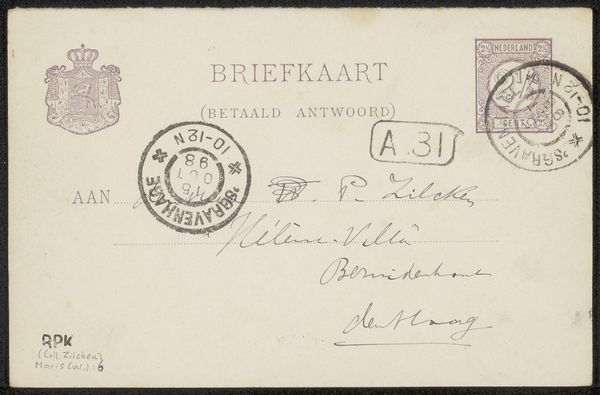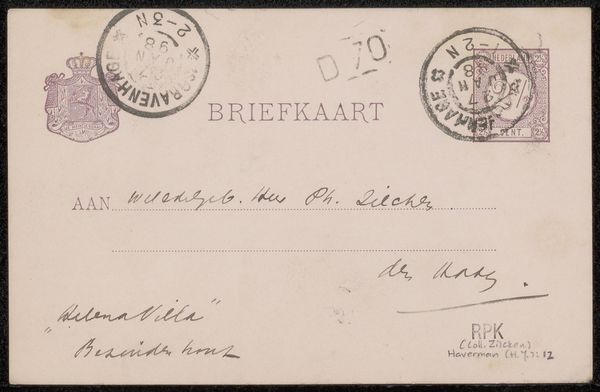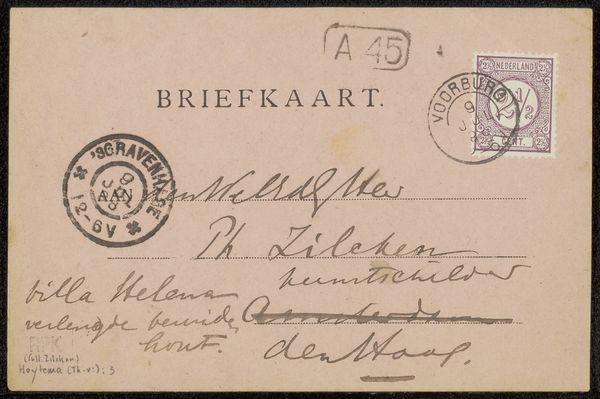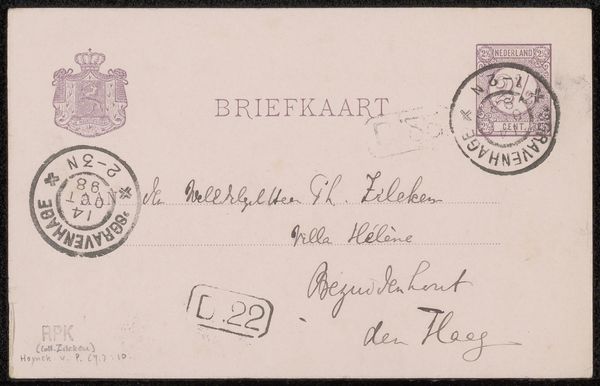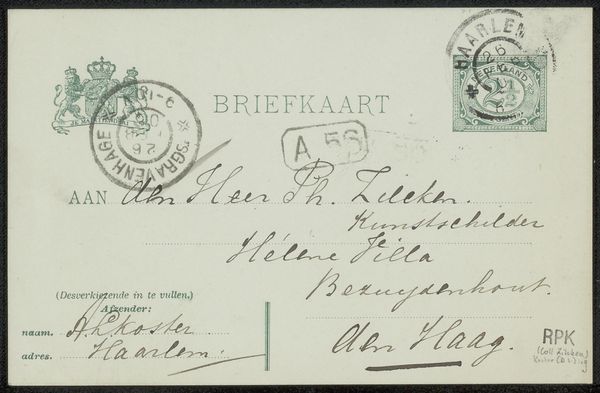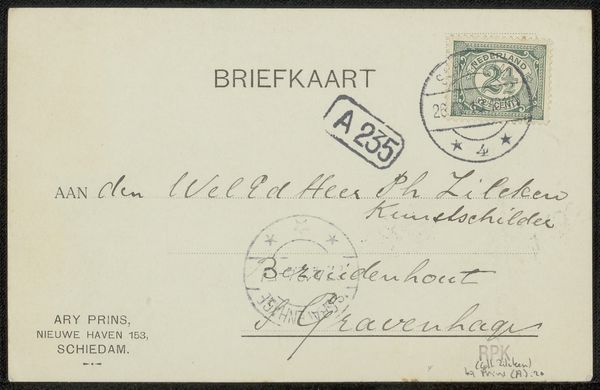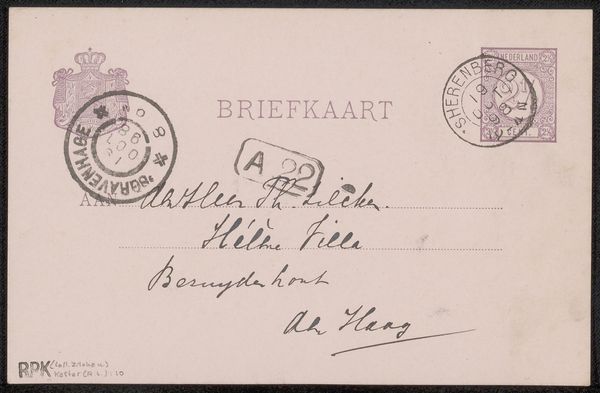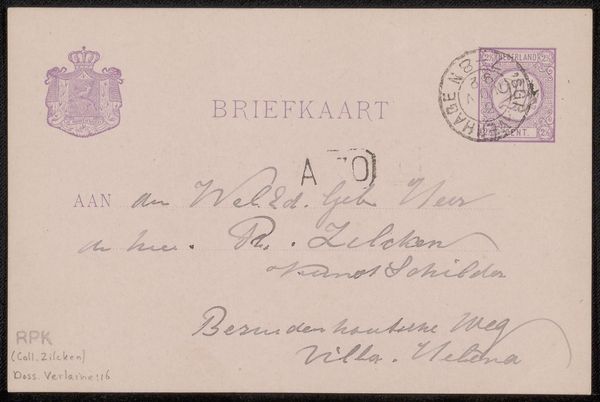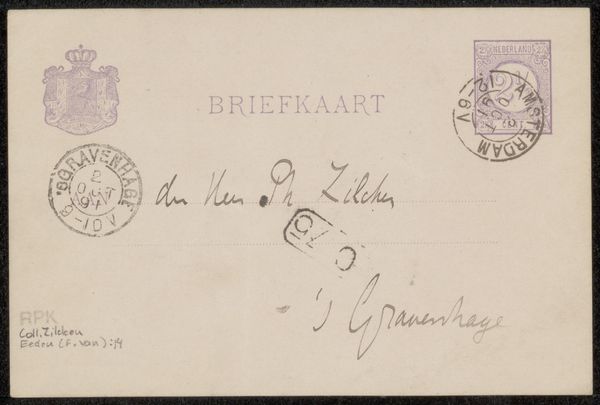
drawing, paper, ink
#
drawing
#
pen sketch
#
paper
#
ink
#
calligraphy
Copyright: Rijks Museum: Open Domain
Editor: Here we have Hendrik Johannes Haverman's "Briefkaart aan Philip Zilcken," made before 1897, a simple ink drawing on paper. The first thing that strikes me is the ephemerality, how fragile it feels as a messenger across time. What stands out to you? Curator: It's precisely that fragility, the everyday nature of correspondence, that draws me in. This isn't just a note; it's a trace of a social connection, a tiny echo from the late 19th century. Consider the implications of the postal system itself—facilitating communication but also inscribing social structures, marking place and time with official stamps and bureaucratic identifiers. Editor: So, it's not just a personal message, but a record of systems at play? Curator: Exactly! And let's not ignore the calligraphy. Handwriting, once a defining feature of one’s identity, is now almost a lost art. Whose story does the style of handwriting tell? What about Zilcken, the recipient? What power dynamics were at play between the sender and receiver, implicit in this exchange? These personal documents help to form part of a narrative of larger global movements of capital, people, and politics. Editor: That’s interesting – the power dynamic wasn’t something I had immediately considered. I was caught up thinking about what the contents of this note may say! Curator: And, whose story is included here? Do we see many glimpses into the lives of marginalized figures of this period? Editor: No, that’s a really great point. Mostly, these narratives are absent… What did you learn when considering this artwork? Curator: That even a seemingly mundane object can be a powerful tool for understanding social history and power relations. Editor: Agreed; it’s certainly given me a fresh perspective!
Comments
No comments
Be the first to comment and join the conversation on the ultimate creative platform.
